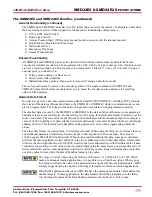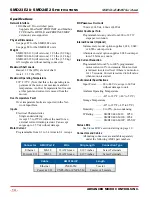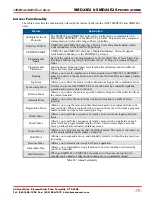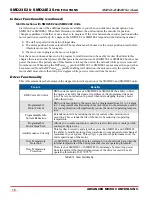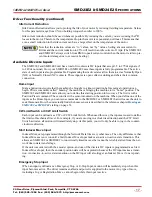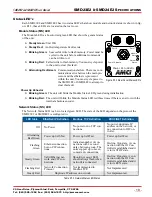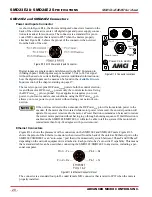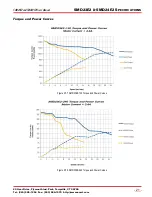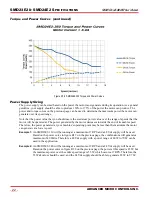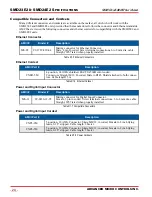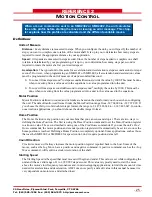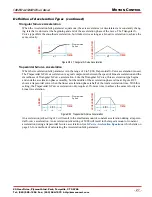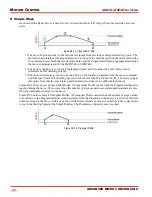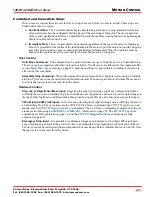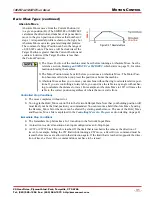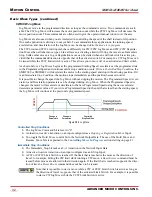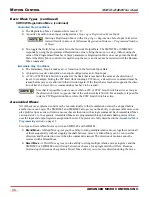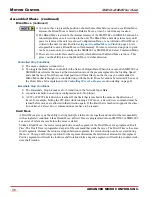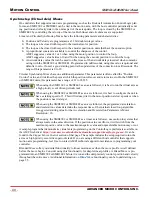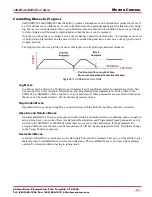
20 Gear Drive, Plymouth Ind. Park, Terryville, CT 06786
Tel: (860) 585-1254 Fax: (860) 584-1973 http://www.amci.com
SMD23E2 and SMD24E2 User’s Manual
M
OTION
C
ONTROL
27
Definition of Acceleration Types (continued)
Triangular S-Curve Acceleration
When the Acceleration Jerk parameter equals one, the axis accelerates (or decelerates) at a constantly chang-
ing rate that is slowest at the beginning and end of the acceleration phase of the move. The Triangular S-
Curve type offers the smoothest acceleration, but it takes twice as long as a Linear Acceleration to achieve the
same velocity.
Figure R2.2 Triangular S-Curve Acceleration
Trapezoidal S-Curve Acceleration
When the Acceleration Jerk parameter is in the range of 2 to 5,000, Trapezoidal S-Curve acceleration is used.
The Trapezoidal S-Curve acceleration is a good compromise between the speed of Linear acceleration and the
smoothness of Triangular S-Curve acceleration. Like the Triangular S-Curve, this acceleration type begins
and ends the acceleration phase smoothly, but the middle of the acceleration phase is linear. Figure R2.3
shows a trapezoidal curve when the linear acceleration phase is half of the total acceleration time. With this
setting, the Trapezoidal S-Curve acceleration only requires 33% more time to achieve the same velocity as a
Linear Acceleration.
Figure R2.3 Trapezoidal S-Curve Acceleration
An acceleration jerk setting of 2 will result in the smallest amount of constant acceleration during a trapezoi-
dal S-curve acceleration. An acceleration jerk setting of 5000 will result in the largest amount of constant
acceleration during a trapezoidal S-curve acceleration. See
S-Curve Acceleration Equations
page 46, for a methods of calculating the Acceleration Jerk parameter.
SPEED
AC
C
E
L
E
R
A
TIO
N
TIME
TIME
2t
2t
Programmed
Speed
S
PEED
A
C
CEL
E
RA
TIO
N
TIME
TIME
4/3t
4/3t
1/4
1/4
1/2
1/2
1/4
1/4
Programmed
Speed

